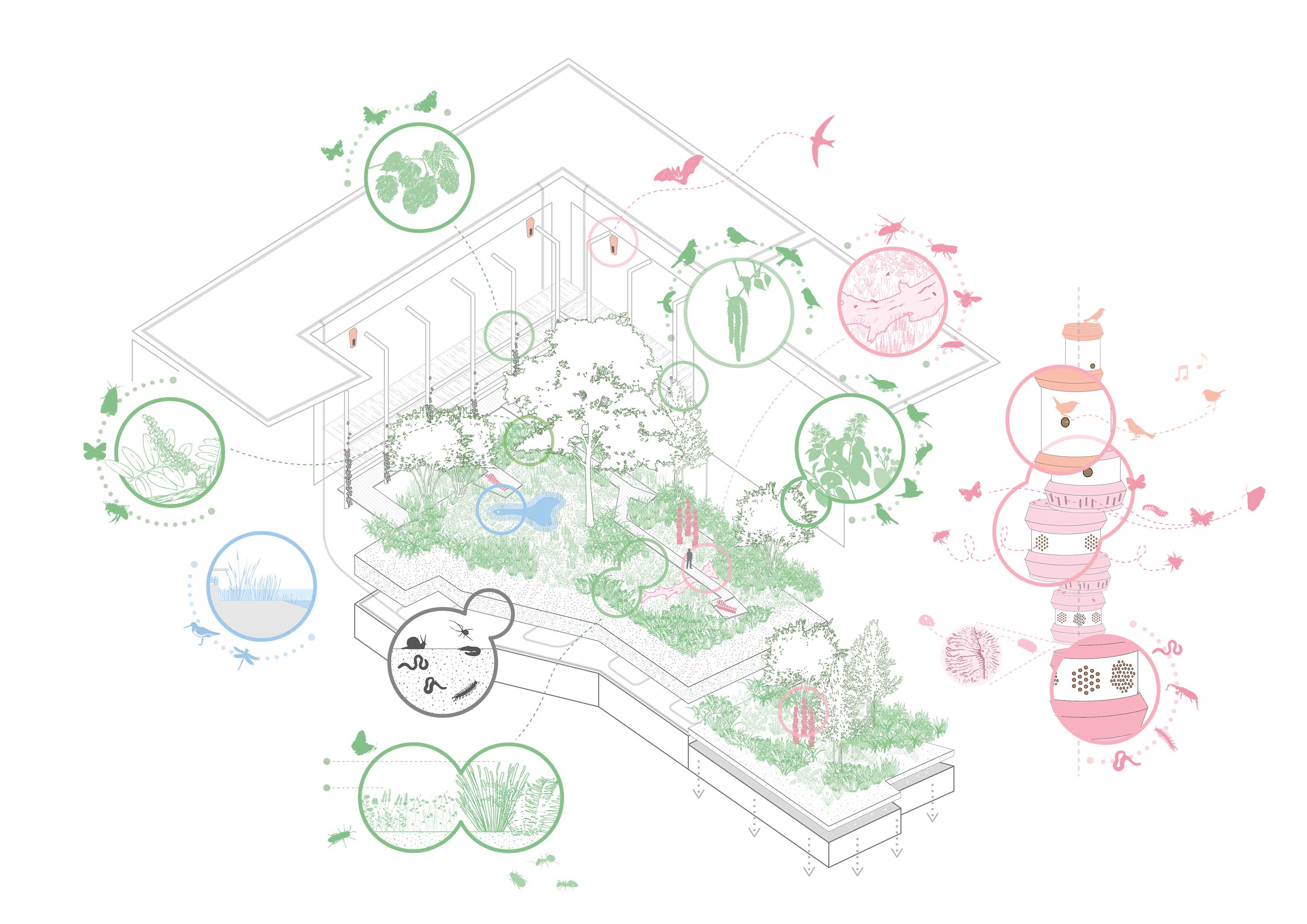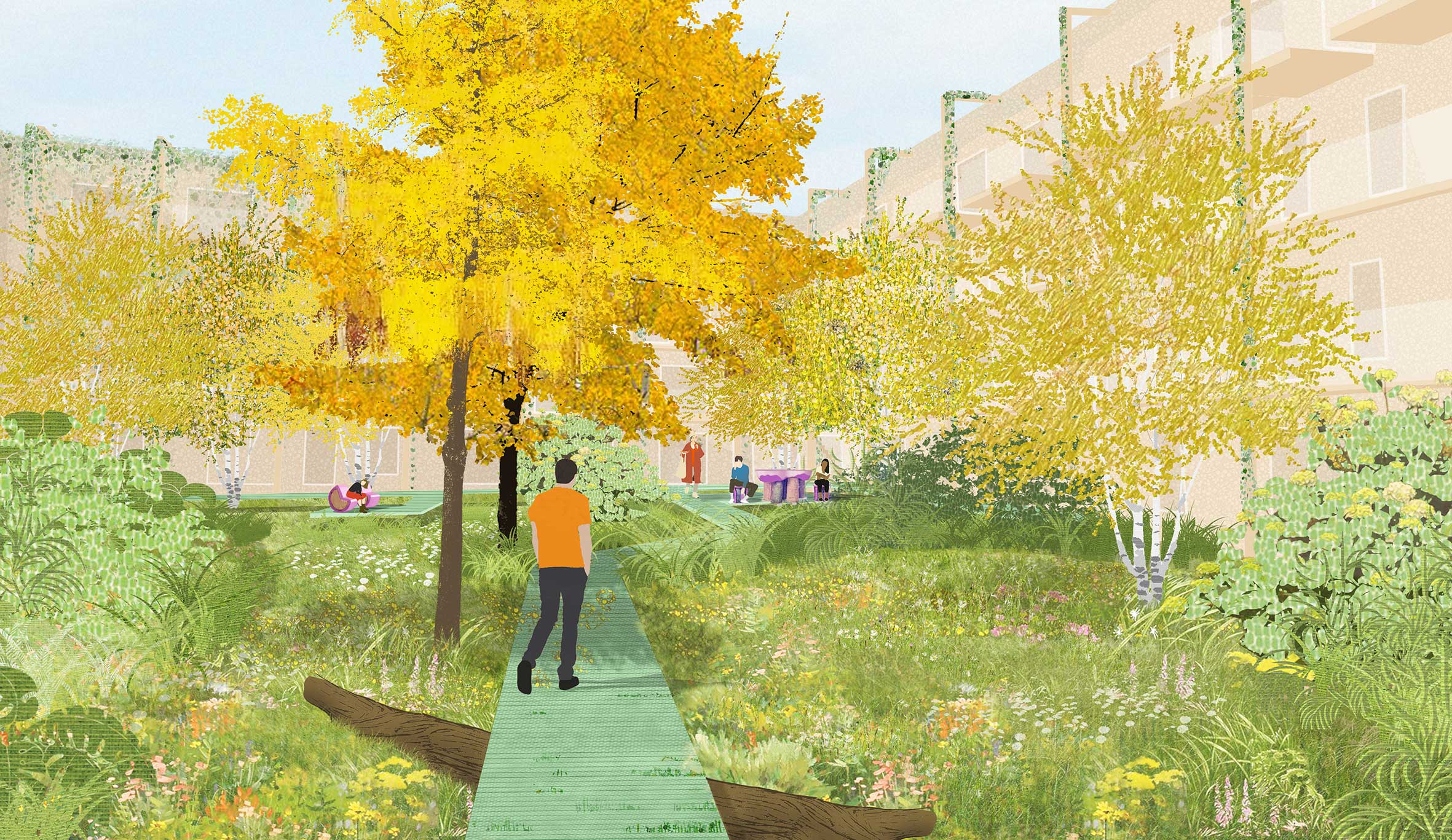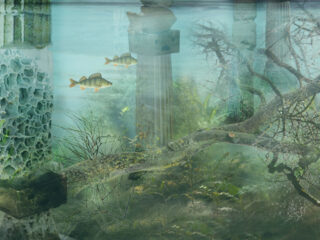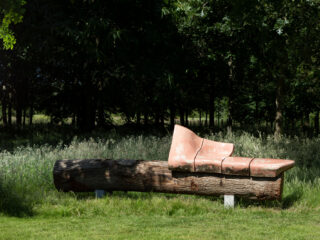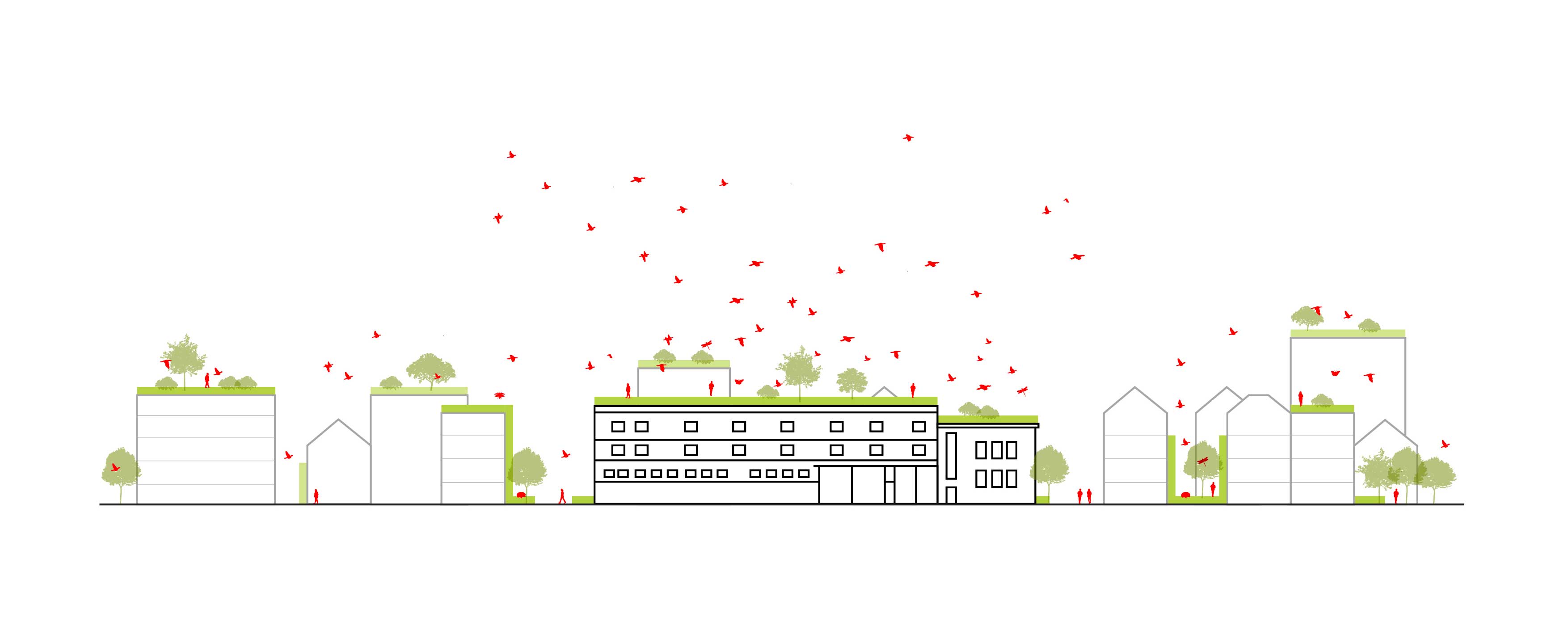
Greening the city
There is a big need to green our cities. It is an important factor for a liveable urban climate. Green will help cooling, it can store water, house different species and provides space for leisure. Amsterdam has the ambition for radical greenification. Rooftop gardens provide a huge possibility, when cities are densified, to green roofs and facades.
This rooftop of a new development in the city centre of Amsterdam contributes to this ambition for its residents and its borough. Next to this it also creates a stepping stone in the bigger -urban- picture.
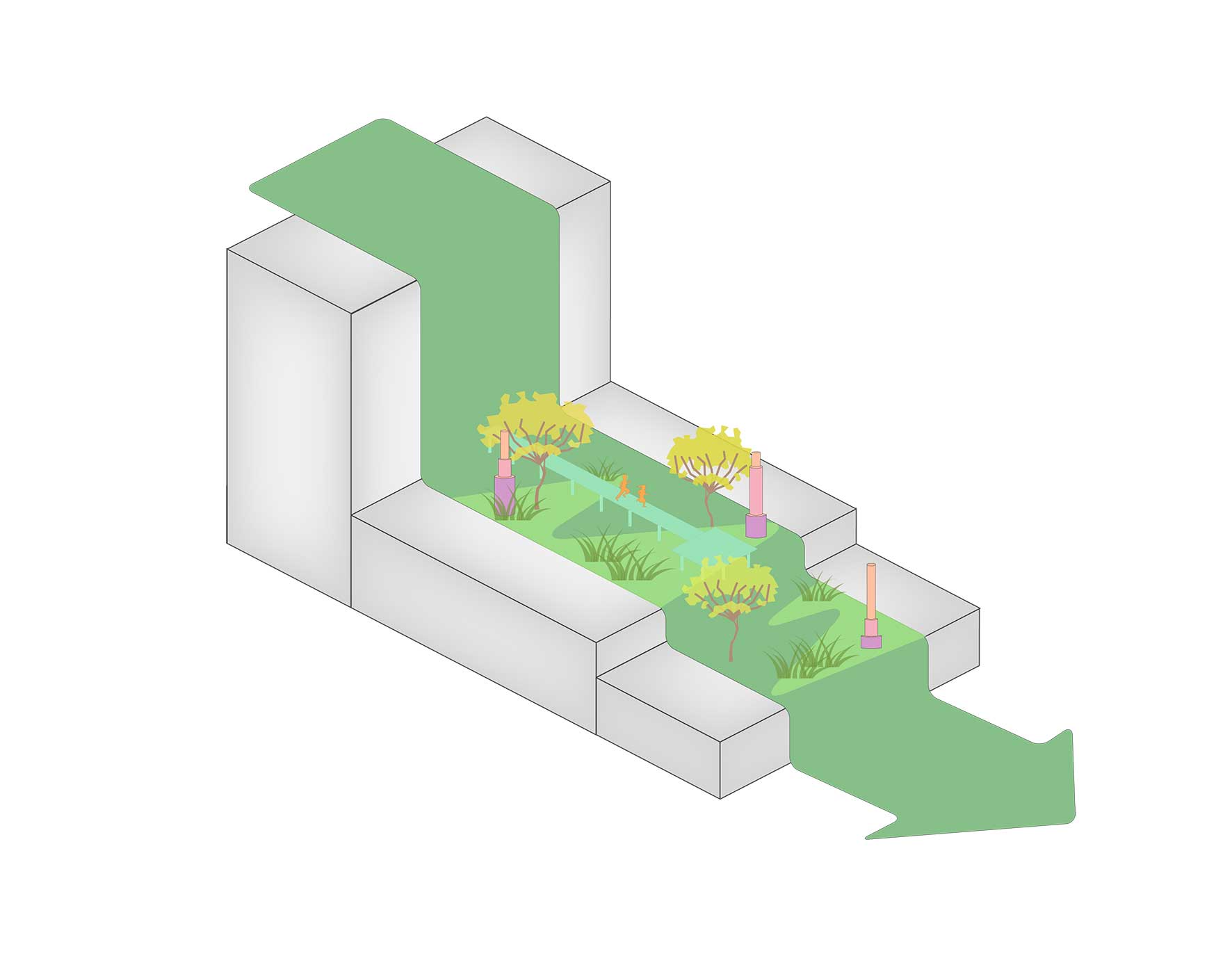
Green tapestry
The rooftop garden will be a green tapestry created out of wild flowers, perennials, shrubs and trees. This carpet is covering the entire building; roof, facades, elevated courtyard and the adjacent ground level. With a planting design which is covering different layers and creates a biodiverse, enclosed space within the courtyard garden.
Amongst the greenery there are small spaces for encounters and relaxation, by an elevated, green pathway which makes it a pleasant place to stay.
Last but nog least rainwater is stored in reservoirs and a custom designed pond. This is an important element to future-proof the garden with a circular water cycle and it houses a range of water-loving creatures at the same time.

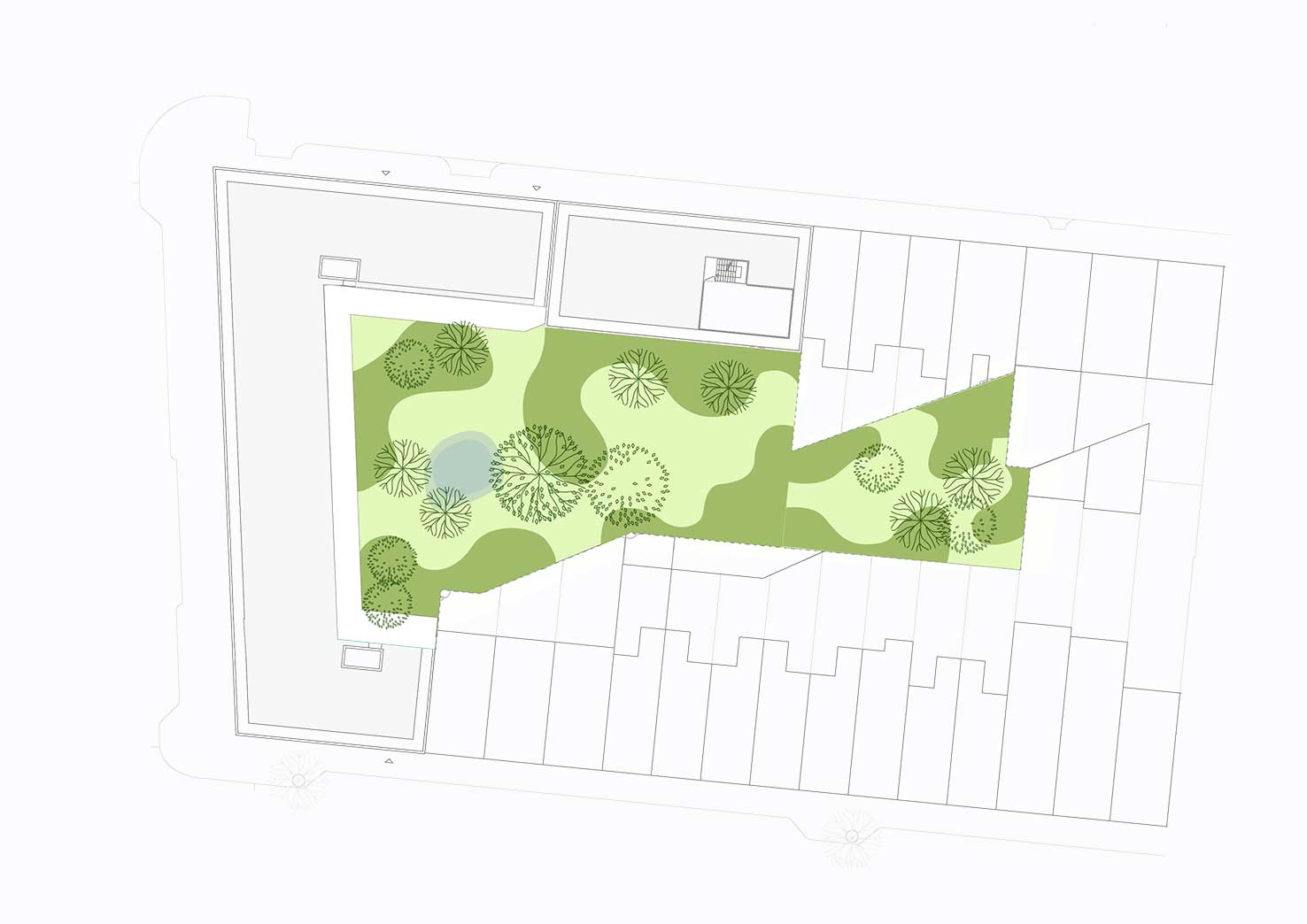
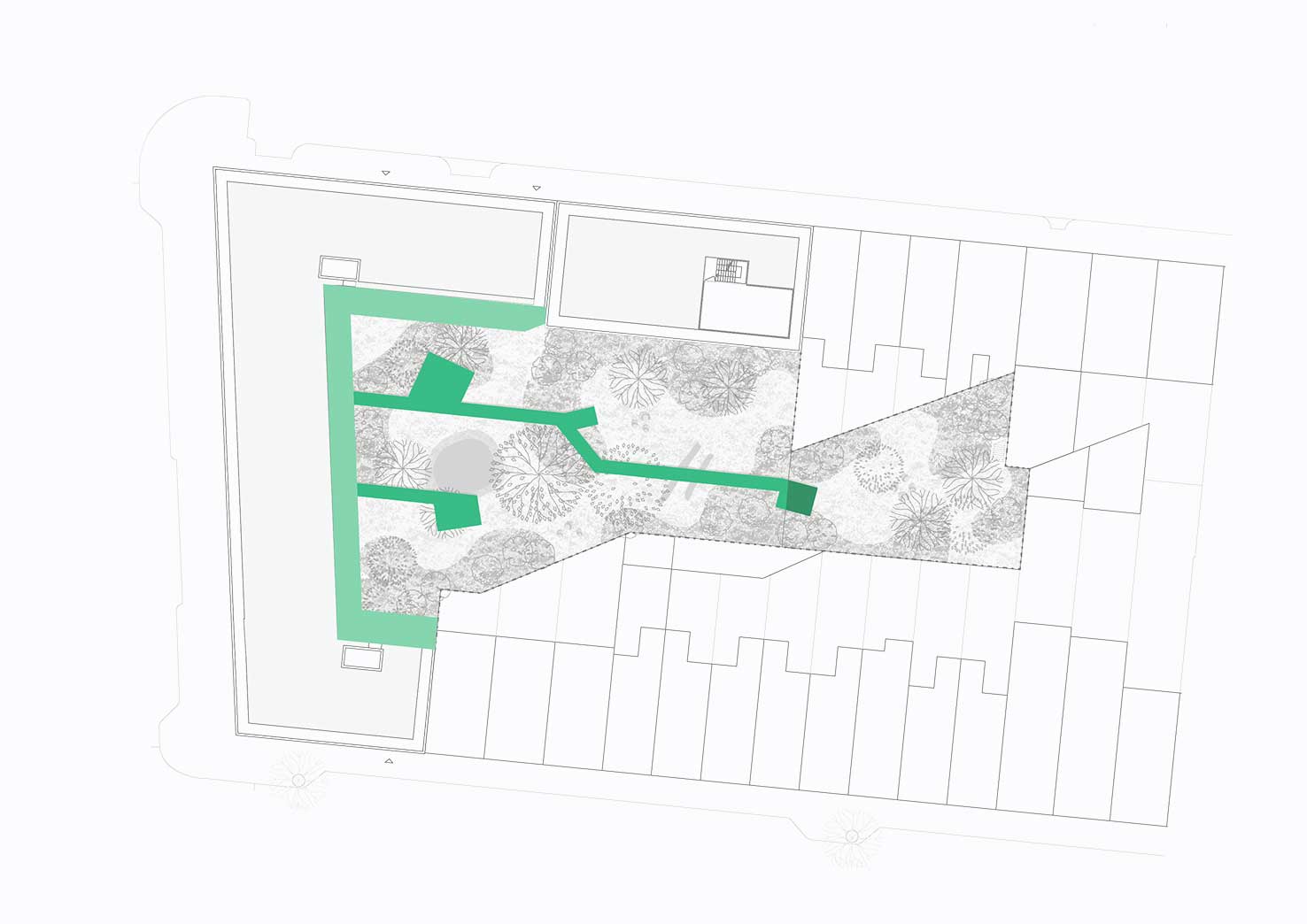
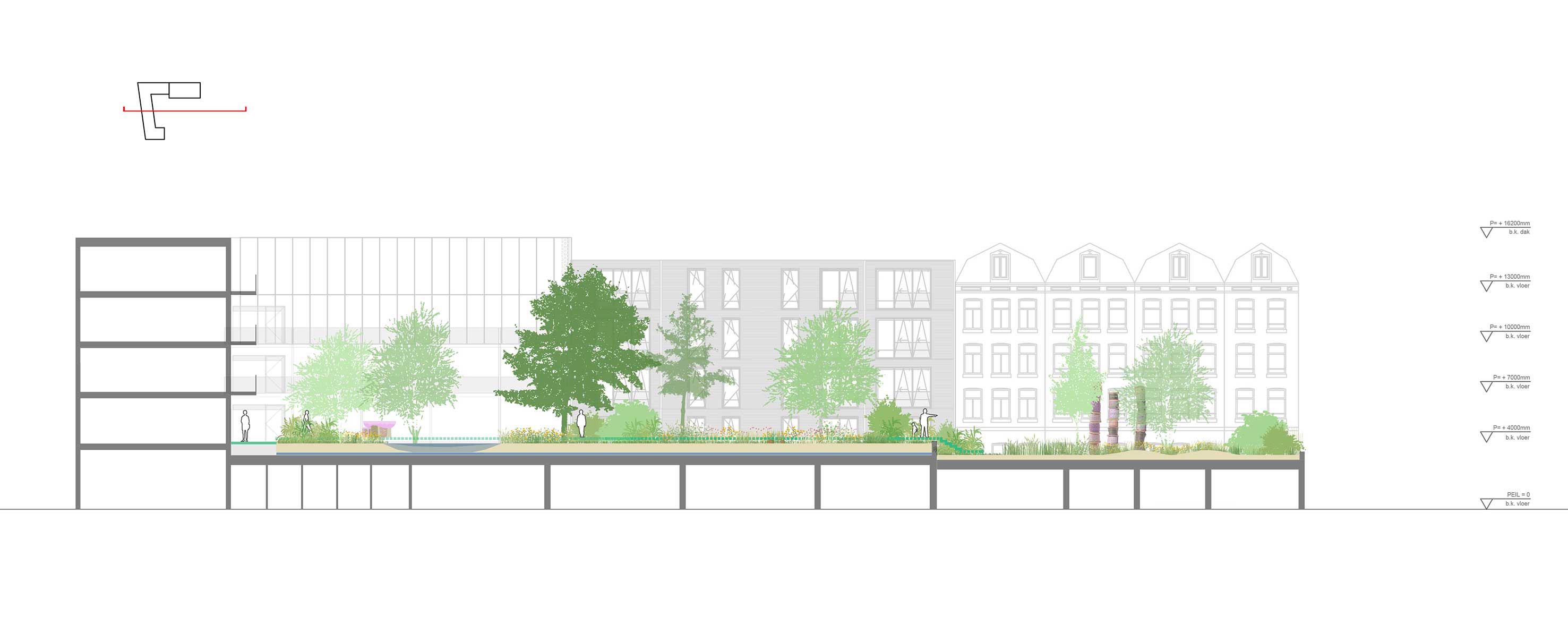
Habitatelements
This rooftop design aims to attract 100 species. Humans are integrated as part of the ecosystem, humans and non-humans alike.
The meet this goal we designed a series of habitatelements, furniture pieces our of tree trunks, and a colourful topping of ceramics. 99 species can house in or feed on the tree. The hundredth species, humankind, is given a layer of its own on top of the wood. This creates an integrated society where humans can watch, listen and learn from “nature” without disturbing the habitat of other species.
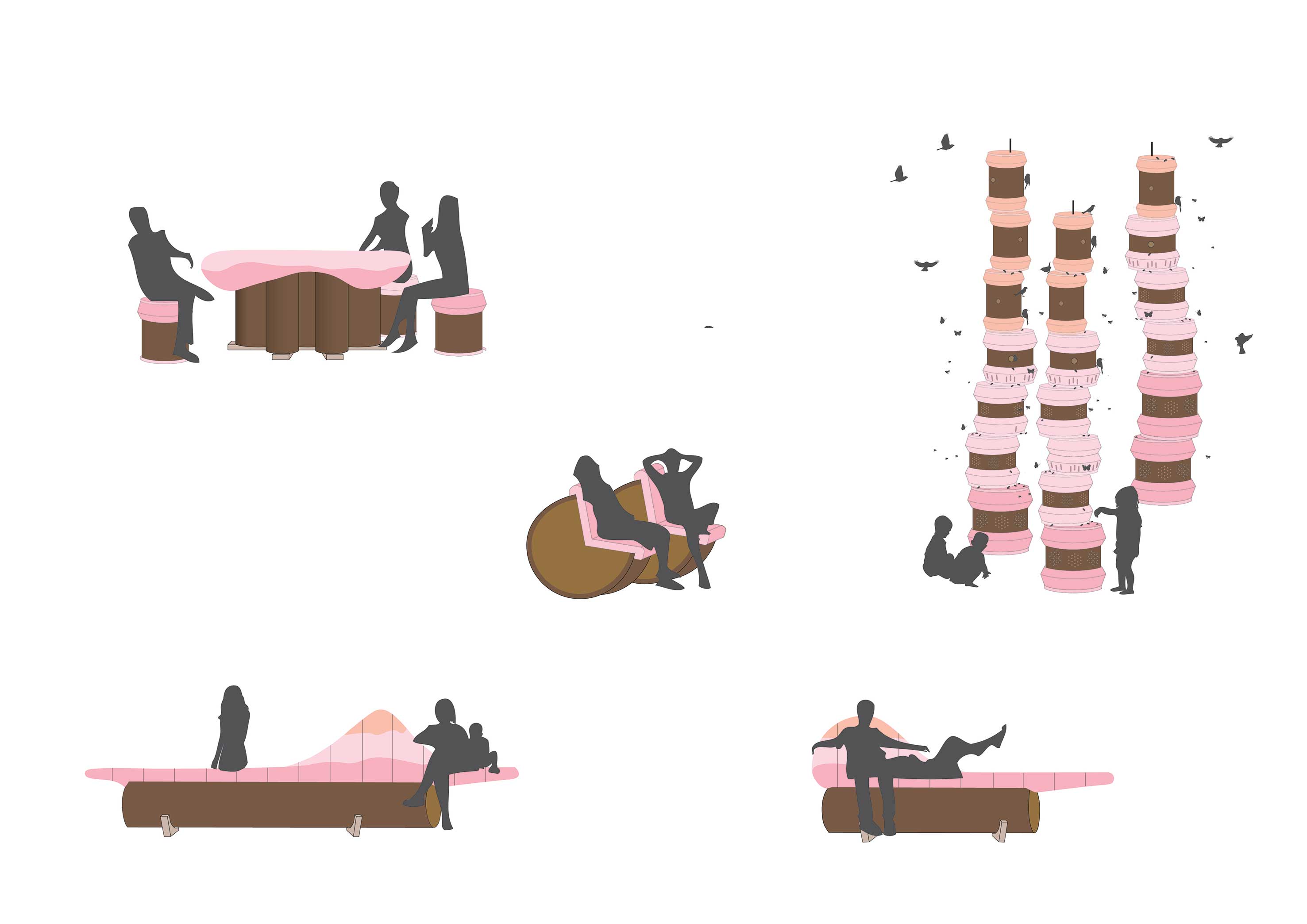
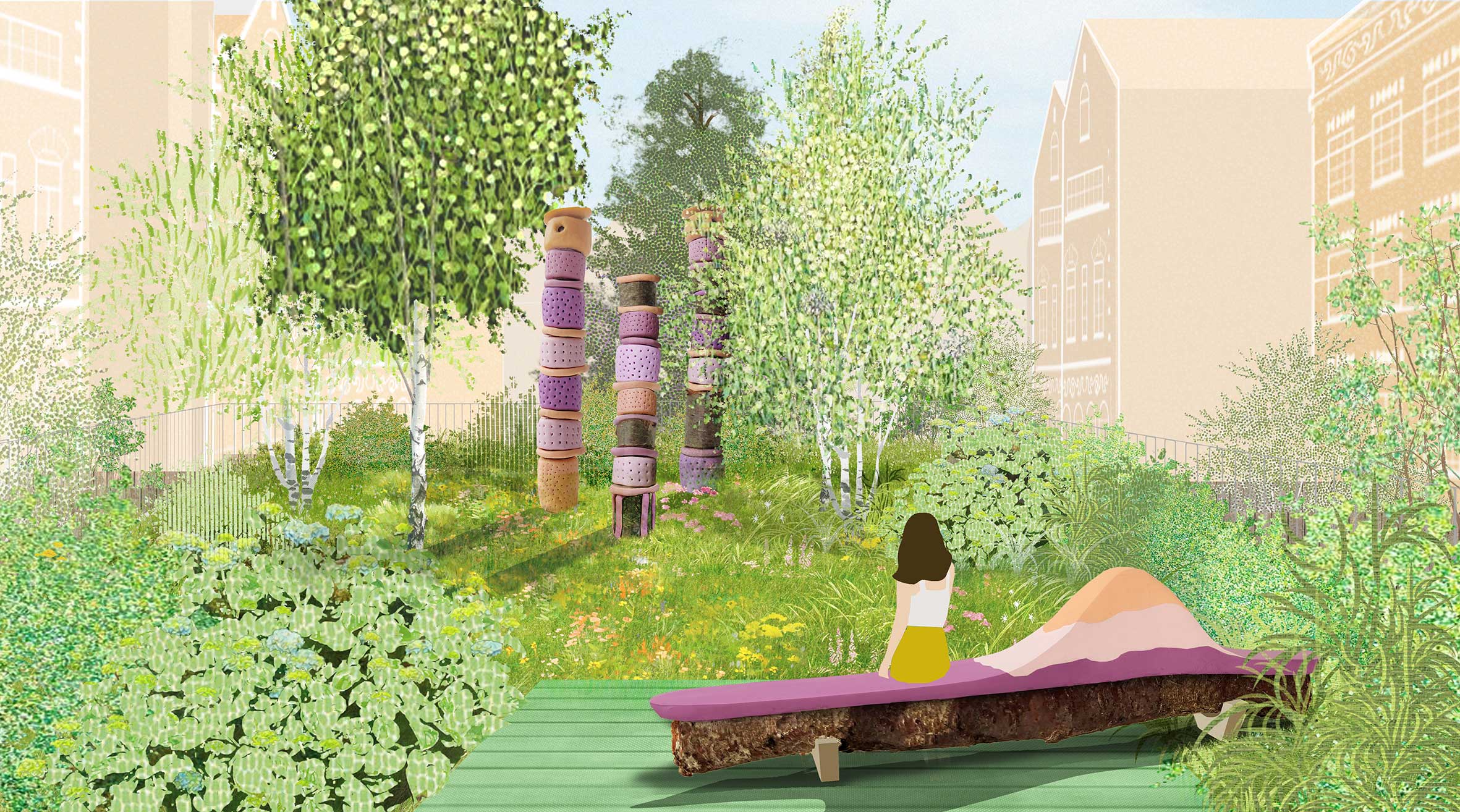
An new urban symbiosis
With this design we integrate architecture and nature. By greening roofs and facades with natural planting that attract different species, integrating a polder roof with pond, that creates humid habitats and using trees to create space and sunny spots, to increase diversity within the garden.
